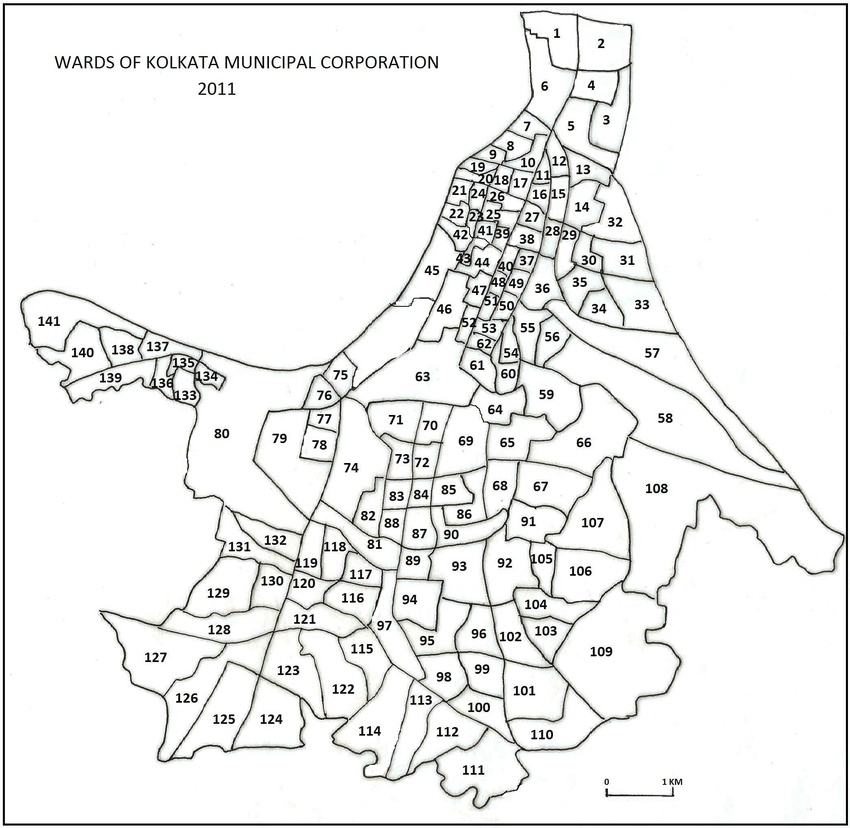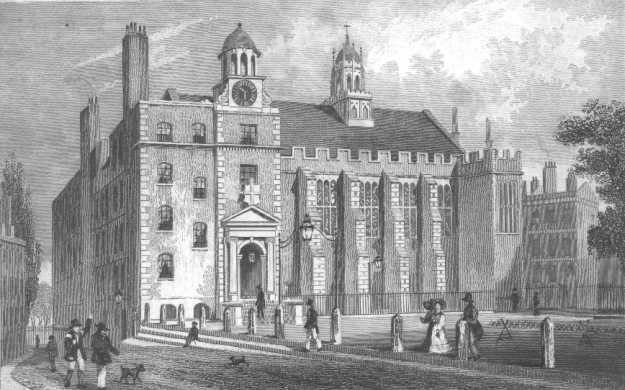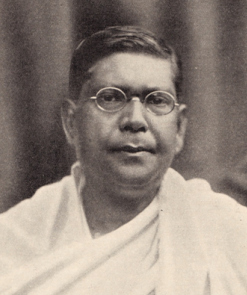|
Kolkata Municipal Corporation
Kolkata Municipal Corporation (abbreviated KMC; also Calcutta Municipal Corporation) is the local government of the Indian city of Kolkata, the state capital of West Bengal. This civic administrative body administers an area of . Its motto, ''Purosri Bibardhan'', is inscribed on its emblem in Bengali script. Geography The Kolkata Municipal Corporation is located at in Kolkata, West Bengal. Department Structure Kolkata Municipal Corporation was established in 1876. Under the guidance of the first Minister of Local Self-Government in Bengal, Sir Surendranath Banerjee, the Calcutta Municipal Act of 1923 made provision for the enfranchisement of women and the election of a Mayor of Kolkata annually. Deshbandhu Chittaranjan Das was the first Mayor of Kolkata Municipal Corporation with Subhas Chandra Bose as his Chief Executive Officer. Later mayors include Deshapriya Jatindra Mohan Sengupta, Subhas Chandra Bose, Bidhan Chandra Roy, Nalini Ranjan Sarkar, Abul Kasem Fazlul Haque, ... [...More Info...] [...Related Items...] OR: [Wikipedia] [Google] [Baidu] |
Kolkata
Kolkata (, or , ; also known as Calcutta , the official name until 2001) is the capital of the Indian state of West Bengal, on the eastern bank of the Hooghly River west of the border with Bangladesh. It is the primary business, commercial, and financial hub of Eastern India and the main port of communication for North-East India. According to the 2011 Indian census, Kolkata is the seventh-most populous city in India, with a population of 45 lakh (4.5 million) residents within the city limits, and a population of over 1.41 crore (14.1 million) residents in the Kolkata Metropolitan Area. It is the third-most populous metropolitan area in India. In 2021, the Kolkata metropolitan area crossed 1.5 crore (15 million) registered voters. The Port of Kolkata is India's oldest operating port and its sole major riverine port. Kolkata is regarded as the cultural capital of India. Kolkata is the second largest Bengali-speaking city after Dhaka ... [...More Info...] [...Related Items...] OR: [Wikipedia] [Google] [Baidu] |
Abul Kasem Fazlul Haque
Abul Kasem Fazlul Huq ( bn, আবুল কাশেম ফজলুল হক, ur, ; 26October 1873 — 27 April 1962), popularly known as Sher-e-Bangla (''Lion of Bengal''), was a British Indian and Pakistani lawyer and writer who presented the Lahore Resolution which had the objective of creating an independent Pakistan. He also served as the first and longest Prime Minister of Bengal during the British Raj. Born on 1873 in a Bengali Muslim family in British Bengal, Huq held important political offices in the subcontinent, including President of the All India Muslim League (1916-1921), General Secretary of the Indian National Congress (1916-1918), Education Minister of Bengal (1924), Mayor of Calcutta (1935), Prime Minister of Bengal (1937-1943), Advocate General of East Bengal (1947-1952), Chief Minister of East Bengal (1954), Home Minister of Pakistan (1955-1956) and Governor of East Pakistan (1956-1958). Huq was first elected to the Bengal Legislative Council from ... [...More Info...] [...Related Items...] OR: [Wikipedia] [Google] [Baidu] |
Nalini Ranjan Sarkar
Nalini Ranjan Sarkar () (1882–25 January 1953) was an Indian businessman, industrialist, economist, and public leader. He was greatly involved in the political and economic regeneration of Bengal. Sarkar was Finance Minister of West Bengal in 1948. The Sarkar Committee Report was instrumental in the subsequent establishment of the four Indian Institutes of Technology (IITs) by the Government of India. Early life, education and joining politics Nalini Ranjan Sarkar was born in a middle class Kayastha family from Kendua of greater Mymensingh district (now Netrokona District, Bangladesh), British India. After passing the Entrance Examination from the Pogose School, Dhaka in 1902, he joined the Jagannath College in Dhaka. Subsequently, he joined the City College, Calcutta, of the University of Calcutta but could not continue his studies for financial reasons. He came to Kolkata penniless. He plunged into nationalist movement which swept over the country in the wake of Partition ... [...More Info...] [...Related Items...] OR: [Wikipedia] [Google] [Baidu] |
Bidhan Chandra Roy
Bidhan Chandra Roy (1 July 1882 – 1 July 1962) was an Indian physician, educationist, and statesman who served as Chief Minister of West Bengal from 1948 until his death in 1962. Roy played a key role in the founding of several institutions and the cities Bidhannagar and Kalyani. In India, the National Doctors' Day is celebrated in his memory every year on the 1st of July. He was awarded the Bharat Ratna, India's highest civilian honour in 1961. Early life and education Bidhan Chandra Roy was born on 1 July 1882 to a Bengali Kayastha family in Bankipore in Patna, where his father, Prakash Chandra Roy, was serving as an excise inspector. His mother, Aghorkamini Devi, was religious and a devoted social worker. Bidhan was the youngest of five siblings – he had 2 sisters, Susharbashini and Sarojini, and 2 brothers, Subodh and Sadhan. Bidhan's parents were ardent Brahmo Samajists. Prakash Chandra was a descendant of the family of Maharaja Pradapaditya, the rebel Hindu ki ... [...More Info...] [...Related Items...] OR: [Wikipedia] [Google] [Baidu] |
Deshapriya Jatindra Mohan Sengupta
Jatindra Mohan Sengupta (22 February 1885 – 23 July 1933) was an Indian revolutionary against the British rule. He was arrested several times by the British police. In 1933, he died in a prison located in Ranchi, India. Sengupta studied at Hare School, Calcutta and Presidency College, Calcutta. After that he travelled to England, where he studied law at Downing College, Cambridge. During his stay there, he met and married Edith Ellen Gray, later known as Nellie Sengupta. He was elected president of the Cambridge Majlis in 1908. After returning to India, he started a legal practice. He also joined in Indian politics, becoming a member of the Indian National Congress and participating in the Non-Cooperation Movement. Eventually, he gave up his legal practice in favour of his political commitment. Early life Jatindra Mohan Sengupta was born on 22 February 1885 to a prominent land-owning (''zamindar'') family of Barama, in Chittagong district of British India (now in Chittag ... [...More Info...] [...Related Items...] OR: [Wikipedia] [Google] [Baidu] |
Subhas Chandra Bose
Subhas Chandra Bose ( ; 23 January 1897 – 18 August 1945 * * * * * * * * *) was an Indian nationalist whose defiance of British authority in India made him a hero among Indians, but his wartime alliances with Nazi Germany and Imperial Japan left a legacy vexed by authoritarianism,* * anti-Semitism,* * * * * * and military failure.* * * * The honorific Netaji (Hindi: "Respected Leader") was first applied to Bose in Germany in early 1942—by the Indian soldiers of the ''Indische Legion'' and by the German and Indian officials in the Special Bureau for India in Berlin. It is now used throughout India. Subhas Bose was born into wealth and privilege in a large Bengali family in Orissa during the British Raj. The early recipient of an Anglocentric education, he was sent after college to England to take the Indian Civil Service examination. He succeeded with distinction in the vital first exam but demurred at taking the routine final exam, citing nationalism to be a higher ... [...More Info...] [...Related Items...] OR: [Wikipedia] [Google] [Baidu] |
Chittaranjan Das
Chittaranjan Das (5 November 1870 – 16 June 1925), popularly called ''Deshbandhu'' (Friend of the Nation), was an Indian freedom fighter, political activist and lawyer during the Indian independence movement and founder-leader of the Swaraj Party in undivided Bengal during the period of British colonial rule in India. His name is abbreviated as C. R. Das. He was closely associated with a number of literary societies and wrote poems, apart from numerous articles and essays. Early life Chittaranjan Das was born in Bikrampur in a well known Baidya"Das"family in the village named "Telirbagh" which is situated in present-day Tongibari upozila of Munshiganj (Bikrampur) district of Bangladesh on 5 November 1870 Family Das family were members of Brahmo Samaj. Chittaranjan was the son of Bhuban Mohan Das, and nephew of the Brahmo social reformer Durga Mohan Das. His father was a solicitor and a journalist who edited the English church weekly, ''The Brahmo Public Opinion''. So ... [...More Info...] [...Related Items...] OR: [Wikipedia] [Google] [Baidu] |
Mayor Of Kolkata
The Mayor of Kolkata is the chief executive of the Kolkata Municipal Corporation, one of the civic authorities in the Indian city of Kolkata. He is the ''First Citizen'' of the city of Kolkata. There have been 38 mayors of Kolkata in total till now since first election in 1924. History The first Kolkata Municipal Election was held on 16 April 1924, during the time of British India, under the ''Calcutta Municipal Act, 1923 - Bengal Act III of 1923''. Mayors were elected on an annual basis. No corporation elections were held, therefore there was no mayor, from 1948 to 1952. In 1952 further mayors were appointed on an annual basis under the ''Calcutta Municipal Act, West Bengal Act XXXIII of 1951''. There was another break in mayoral elections from 1972 to 1985, after which mayors were elected on a five year term under the ''Calcutta Municipal Corporation Act, 1980 West Bengal Act LIX of 1980''. List of mayors References {{reflist , refs= {{cite web , title=Mayors of Kolkata , ... [...More Info...] [...Related Items...] OR: [Wikipedia] [Google] [Baidu] |
Surendranath Banerjee
Sir Surendranath Banerjee often known as Rashtraguru ( bn, Rāṣṭraguru, Teacher of the Nation; 10 November 18486 August 1925) was Indian nationalist leader during the British Rule. He founded a nationalist organization called the Indian National Association and was one of the founding members of the Indian National Congress. Surendranath supported Montagu–Chelmsford Reforms, unlike Congress, and with many liberal leaders he left Congress and founded a new organisation named ''Indian National Liberation Federation'' in 1919. Early life Surendranath Banerjee was born in Calcutta, in the province of Bengal to a Rarhi Kulin Brahmin family, suggesting that the ancestral seat of the family was at Rarh region of present-day West Bengal. His ancestors had migrated to East Bengal at some point of time and settled in a village called Lonesingh in Faridpur district. It was his great grand father Babu Gour Kishire Banerjee who emigrated and settled in a village called Monirampur ne ... [...More Info...] [...Related Items...] OR: [Wikipedia] [Google] [Baidu] |
Bengali Alphabet
The Bengali script or Bangla alphabet ( bn, বাংলা বর্ণমালা, ''Bangla bôrṇômala'') is the alphabet used to write the Bengali language based on the Bengali-Assamese script, and has historically been used to write Sanskrit within Bengal. It is one of the most widely adopted writing systems in the world (used by over 265 million people). From a classificatory point of view, the Bengali writing system is an abugida, i.e. its vowel graphemes are mainly realised not as independent letters, but as diacritics modifying the vowel inherent in the base letter they are added to. The Bengali writing system is written from left to right and uses a single letter case, which makes it a unicameral script, as opposed to a bicameral one like the Latin script. It is recognisable, as are some other Brahmic scripts, by a distinctive horizontal line known as a '' mātrā'' () running along the tops of the letters that links them together. The Bengali writing sys ... [...More Info...] [...Related Items...] OR: [Wikipedia] [Google] [Baidu] |
Emblem
An emblem is an abstract or representational pictorial image that represents a concept, like a moral truth, or an allegory, or a person, like a king or saint. Emblems vs. symbols Although the words ''emblem'' and '' symbol'' are often used interchangeably, an emblem is a pattern that is used to represent an idea or an individual. An emblem develops in concrete, visual terms some abstraction: a deity, a tribe or nation, or a virtue or vice. An emblem may be worn or otherwise used as an identifying badge or patch. For example, in America, police officers' badges refer to their personal metal emblem whereas their woven emblems on uniforms identify members of a particular unit. A real or metal cockle shell, the emblem of St. James the Apostle, sewn onto the hat or clothes, identified a medieval pilgrim to his shrine at Santiago de Compostela. In the Middle Ages, many saints were given emblems, which served to identify them in paintings and other images: St. Catheri ... [...More Info...] [...Related Items...] OR: [Wikipedia] [Google] [Baidu] |


.jpg)







.jpg)